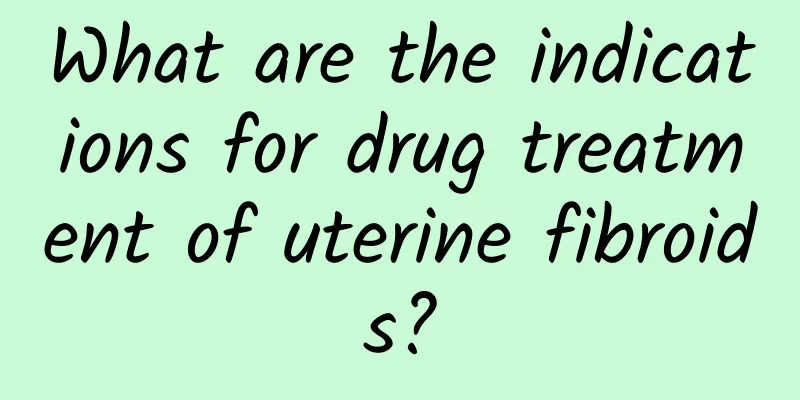What is the most effective treatment for Bartholinitis?

|
There are many people around us who are often affected by Bartholinitis. Usually, we need to recognize the occurrence of the disease as early as possible. Therefore, we should understand the treatment of this disease as early as possible, take comprehensive care of it, avoid causing more troubles, and pay attention to anti-infection treatment to avoid causing more harm. What are the effective treatments for Bartholinitis? Effective treatments for Bartholinitis: 1. General treatment Patients with acute cystitis need to rest properly, drink plenty of water to increase urine output, pay attention to nutrition, avoid irritating foods, and take hot water baths to relieve symptoms. Patients with obvious bladder irritation symptoms are given antispasmodics to relieve symptoms. (II) Anti-infective drug treatment Effective antibacterial drugs should be selected based on the results of urine bacterial culture and drug sensitivity test. The dosage of treatment drugs should be sufficient and the duration should be long. Generally, it should be used for 1 to 2 weeks after the symptoms subside and the urine routine is normal. During the treatment process, urine bacterial culture and drug sensitivity tests should be performed regularly, and antibacterial drugs that are sensitive to bacteria should be adjusted at any time in order to achieve complete cure as soon as possible and prevent recurrence. 3. Etiological treatment For chronic cystitis with obvious causes, the causes must be eliminated, otherwise, the cystitis will be difficult to control. The reference diagnostic criteria for this disease are as follows: 1. A red, swollen, hard lump can be seen at the lower 1/3 of the labia majora on one side, with obvious tenderness or obvious fluctuation. 2. Having systemic symptoms such as fever. 3. Laboratory examination: The total white blood cell count may increase, and pathogens may be found in the secretions of the lesions. symptom: 1. Vulvar swelling and pain: The infection is mostly unilateral, with local swelling and pain in the acute phase. If an abscess is formed, the pain will worsen. 2. Fever: Fever is common, but chills are less common. Signs: 1. Vulvar swelling and pain: The infection is mostly unilateral, with local swelling and pain in the acute phase. If an abscess is formed, the pain will worsen. 2. Fever: Fever is common, but chills are less common. 3. Swollen lymph nodes: If the inflammation persists or recurs, there may be swollen inguinal lymph nodes. In daily life, we need to pay attention to developing good hygiene habits, and pay attention to reasonable health care, and pay attention to effective diet, choose professional methods for treatment, and also pay attention to our own hygiene, effectively regulate, and avoid bacterial infections, which can easily cause more troubles. In daily life, we need to pay attention to reasonable health care and effective diet. |
<<: How to treat Bartholinitis?
>>: TCM treatment of Bartholinitis
Recommend
Effect of Lipu Knife in Treating Cervical Erosion
For those who are not responsive to medication an...
Is primary amenorrhea hereditary?
Primary amenorrhea may be related to genetic fact...
Causes of cervicitis
What causes cervicitis? Cervicitis is now a commo...
Clinical treatment of pelvic inflammatory disease
Pelvic inflammatory disease is one of the common ...
Memory loss, how to improve brain power? Professor Wang Jinkun: 3 must-eat foods to make your brain sharper
Do you often experience memory loss such as diffi...
What should I do if I have irregular menstruation at the age of 40? Eating more of these 10 foods is very beneficial for irregular menstruation
1. 20 jujubes, 10 grams of motherwort, 10 grams o...
Experts will introduce the symptoms of chronic pelvic inflammatory disease
Chronic pelvic inflammatory disease is a type of ...
Does a big waist and a bloated belly mean a short life? The new three measurements for health: waist, hips, and calf circumference
With a bloated "water bucket waist", be...
Losing weight helps the body cleanse and detoxify, drinking water alone is not enough! Eating the right high-water-content vegetables and fruits is the key
Water is indispensable for life and exists in foo...
What causes cervical erosion and what are the hazards
Cervical erosion is a common gynecological phenom...
Clinical manifestations of chronic and acute adnexitis
Nowadays, some female friends do not pay much att...
Why do women have fat lower bodies? Evolutionary relationship!
(Text/Yang Qilin) Q: Why do women tend to be fat ...
What to do with uterine fibroids
What to do about uterine fibroids? Uterine fibroi...
How to deal with adnexitis during pregnancy
During pregnancy, women's physical condition ...
Is habitual miscarriage hereditary?
Habitual miscarriage has a chance of being inheri...









